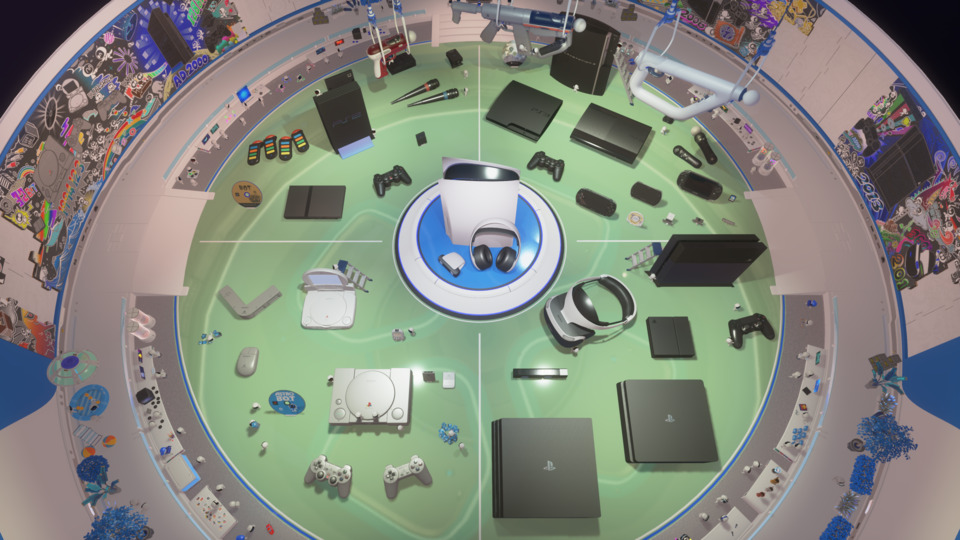Brad Shoemaker hates discussing himself and would rather let the below list do the talking.
This year was shit.

What else can you say? 2020 was a crucible of such endless misery--fear and isolation, anger and injustice, loss of a magnitude that's impossible to reckon with--that the words above are all I could come up with. Without looking back, I imagine I've used the intro space in my last few top 10 lists to make a series of increasingly nervous "boy, what a year" jokes, but there's nothing to joke about anymore. Just a trail of wreckage and sorrow that's going to take a long time to repair.
I'm not a person who's able to quiet the mental chaos and find comfort in video games when things get to be too much; if anything, I guess I'm jealous of those who are able to unplug and lose themselves for a little bit in the midst of so much turmoil. So on top of dealing with some personal challenges that were only exacerbated by the pandemic, having to learn how to be my own video producer and do an already complicated job from home, and staring in horror at the stressors that seemed like they were going to crack America in two, I didn't get through nearly as many games as I might have otherwise. But I still played more than a few, and here are my favorites.
The Rogue-Like Honorable Mention Corner
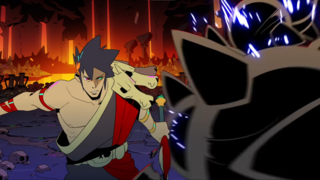
I love a good rogue-like and was quite looking forward to Hades and Spelunky 2, and spent a decent chunk of time with both, but for whatever reason (probably the ones listed above), I just wasn't in much of a mood this year for the failure and repetition, that feeling of bashing your head into a wall until you finally break through, that’s inherent to the genre. Probably I fell off of Demon's Souls on the PS5 faster than expected for the same reason. Instead I mostly preferred story-based games this year where I could make linear progress, or building games where I felt like I was accomplishing something constructive. I'd still like to go back to all of these games, particularly Hades when I get around to fixing my Joy Cons or (ideally) the game comes to PlayStation or Xbox.
10. Star Wars: Squadrons
Just in time for EA's Star Wars deal to expire, here they are with a modern answer to TIE Fighter that... well, it's not exactly TIE Fighter, but it's quite a bit closer than I thought they'd pull off. My jaded expectation was of an arcade-style shooter with only a superficial nod to power and systems management, as much Rogue Squadron (and even Rebel Assault) as it was X-Wing. But this is about as close to the Totally Games classics of the '90s as I think you can reasonably expect from a corporation the size of EA selling to a mass audience in 2020. You have to dig into the options menus a little too deep to enable the advanced controls and systems (and the game could do more to even let you know those options exist), but pretty soon you're diverting power from shields to engines, buzzing cargo freighters to scan their contents, and auto-locking onto whatever fighter is hammering you with ion cannons from above.
Really, all that matters is that the VR mode let me fulfill the childhood wish of actually piloting all those cool ships, from the A-Wing to the Interceptor, that I used to fantasize about. What this game does well--the attention to detail on those ship interiors, the thrill of flying them around while being convinced I was actually sitting in their cockpits, and the mostly-there recreation of what I loved about the old sims--was plenty to earn this game a spot on my list, even though the story was only basically serviceable and I’m not sure I care for Disney Star Wars' depiction of young, hip, diverse Imperial fascism.
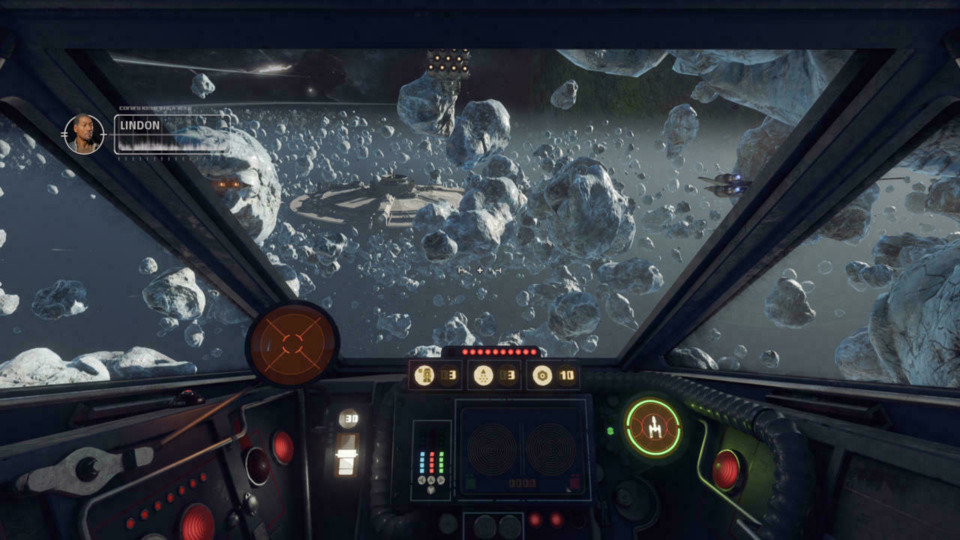
9. Animal Crossing: New Horizons
The thing everyone will say about this game is that it arrived at exactly the right moment, which it did. This isn't my first Animal Crossing, but it's the first one I've spent anywhere near this much time with, owing to several factors:
- It came out roughly a week after everyone locked themselves in their houses
- It was nice to play Animal Crossing on a TV again (and finally in HD)
- My girlfriend played so much of it my Joy Cons finally started developing drift
Look, it’s more Animal Crossing. But as much as Animal Crossing is about doing your own thing and just kind of hanging out, the goal-oriented additions that came with New Horizons via the in-game smartphone, Nook Miles, crafting system and so forth gave this game enough structure that I really stuck with it. It was a daily presence in the house for months. We spent tons of time argui...collaborating on where to put bridges and who to invite to our village. We filled Blathers’ shelves three times over. We cherished the shy octopus Marina.
I just wish this game was easier to share with other people. The frustrating tragedy of New Horizons is that it could have been darn near my favorite game in 2020 if it (and Nintendo) weren't so damn stubborn about getting with the times. The local co-op is woefully limited. Only the primary player can make all the meaningful island decisions. The online system is embarrassingly awful, maybe the worst I've seen over the entire console generation. You can’t join someone else’s island if they have a menu open? You can only have one town per Switch? Only Nintendo could get away with this.
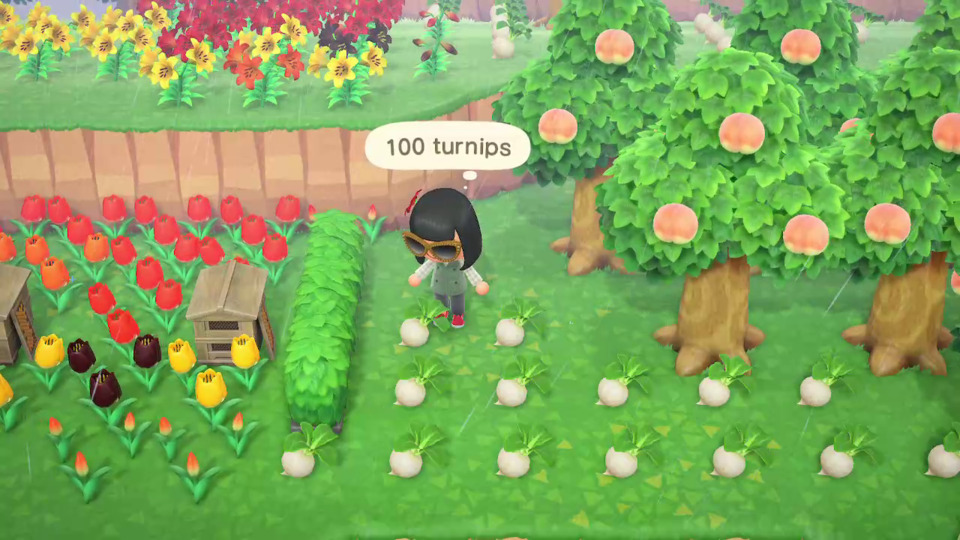
8. Immortals Fenyx Rising
This game is not bad! It's not bad. In fact it's pretty good! Why do I feel like it's gotten such a bad rap, or I need to apologize for liking it or something? I figure it has to be a combination of two things: it's a Ubisoft open-world game--which, look, I'm as burned out on as anyone--and it doesn't really put its best foot forward with the goofball Zeus/Prometheus banter. On the second point, I came to realize pretty fast that Zeus is supposed to be an irritating asshole. He's a god, they’re all irritating assholes! Besides, he ends up being cowed into kind of a lovable knucklehead from time to time anyway. It's not a big deal.
The combat is perfectly fine to good here, and the little physics-based mini-dungeons are sometimes clever enough (though other times frustrating). Mostly, I'm a sucker for the elements this game unashamedly borrows from Breath of the Wild, namely the climb-anywhere-you-want stuff and the do-all-the-objectives-in-whatever-order stuff. The freedom to move around at will and do things at my own pace was enough to offset the activity-checklist feel this game retains from other Ubisoft games. While it doesn't give anywhere near the constant sense of discovery that Zelda does, there are still enough curious little novelties scattered around to make it feel slightly magical on occasion. And in between those moments, there was something to be said this year for sort of zoning out and gliding or climbing around, picking up health upgrades ad nauseam. If I'm going to check activities off a list, at least let me get there however I want.
Also, it just looks fantastic. I needed more games with this much color. For whatever reason, this is the game (which I've been playing on a PS5) that made me realize I'm getting used to 60 frames per second in triple-A games on consoles when I really shouldn’t. I have a sneaking suspicion that we shouldn't get too attached to that kind of performance or we’re probably going to end up disappointed in the next year or so when the new-hardware honeymoon phase is over.
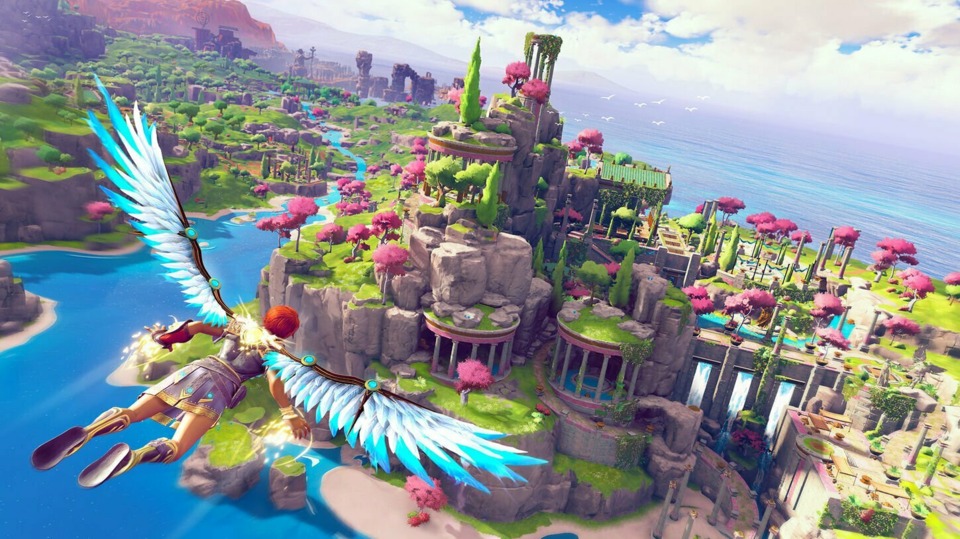
7. Ghost of Tsushima
I went through a strange process with this game, of first being disappointed by its overly stereotypical depiction of (fake) feudal Japan by way of classic samurai cinema, and then later turning a corner and coming to appreciate its almost cartoonish fixation on katanas and haiku and the solemnity of duty and honor (or whatever). That transition probably happened around the time I'd explored enough of the lavishly rendered landscape and taken part in enough melodramatic sword duels to realize that I was going to be blanketed by falling leaves/cherry blossoms absolutely everywhere I went. This game isn't remotely interested in acting as a subtle period piece, instead setting the "samurai movie" knob at 10 and then breaking it off. It's almost goofy in how serious and over-the-top it is, which I really enjoyed.
The game is just gorgeous, mashing time of day, weather conditions and special effects like wind and smoke into endless dazzling combinations that I couldn't get enough of. While its mix of sword action and stealth are quite video game-y, I really like how parry- and counter-heavy the combat is, almost like they made Bushido Blade into an open-world game. Before release it was said the game has some pacing problems, and sure enough, I spent so much time doing all the side activities on the first island, and became so powerful and started just breezing through the action as a result, that by the time I got to the point where it was time to move on to act two, I just... put it down instead. But I was fairly invested in Jin's quest to redeem himself, along with some of the side stories like those of Masako and Ishikawa, and since the game now runs at a high frame rate on the PS5 I've continually felt a bit of a pull to go back to it.
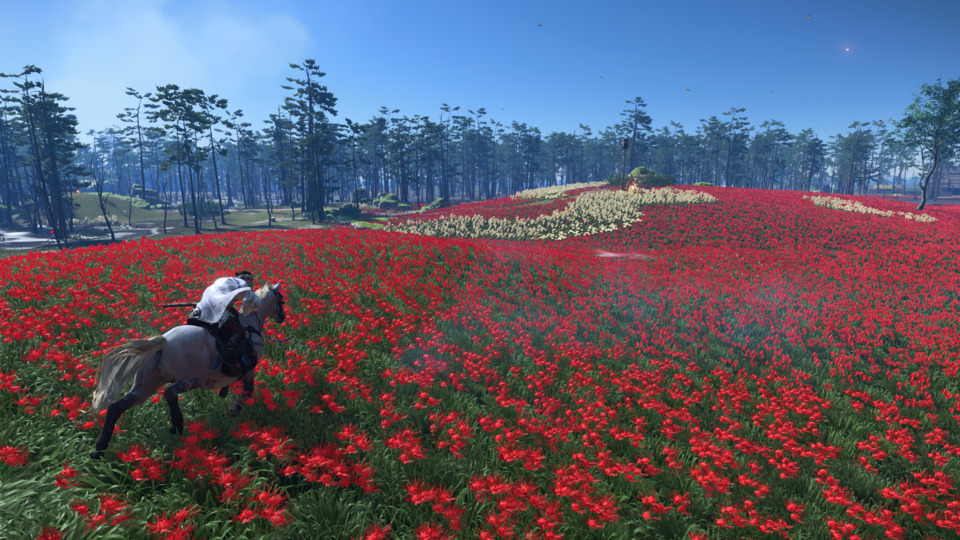
6. The Last of Us Part II
This is both the best video game Naughty Dog has made and their most difficult story to get through. Obviously it’s a far cry from the breezy, swashbuckling page-turners of the Uncharted series, but even Joel’s descent into crazed codependence in the first Last of Us had a momentum to it that propelled you along with the characters’ cross-country trek. Part II is a grueling game to finish, and while it makes its points effectively and features some masterful storytelling and direction, this wasn’t the best year to watch multiple main characters succumbing to bloodlust and feeding an escalating cycle of vengeance with bad decision after bad decision. (It did have a few laudable moments of lightness; that museum flashback really is extraordinary).
I deeply admire the narrative ambition of this game. The audacity to so thoroughly make you despise an antagonist, then flip the game on its head and cast you as that antagonist, thoroughly humanizing her along the way, feels like something Kojima would try, but it’s not something you expect from one of the industry’s premiere triple-A Western studios.
What an unbelievable technical showcase of the extraordinary talents at Naughty Dog this is, and it’s a game I’d put right up there with Mark of the Ninja and Metal Gear Solid V as one of my absolute favorites in the stealth action category. With the bigger toolbox of weapons and stealth abilities, playing on hard and having to carefully manage resources made a lot of those wide-open action encounters thrilling and improvisational, as I set up elaborate traps and toyed with enemies from the shadows, like few third-person games I’ve played.
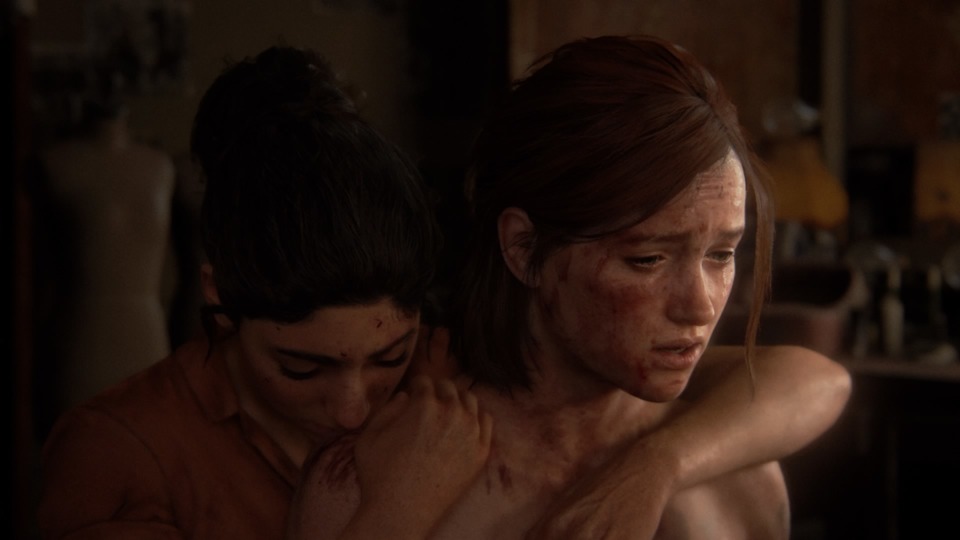
5. Marvel’s Spider-Man: Miles Morales
Perhaps due to pandemic-related time dilation, it felt like I'd barely finished the previous Spider-Man game when Miles Morales was about to appear on the scene. (In fact it was closer to two years.) At any rate, I'd gotten my fill of playing that first game well before it ended, and mainly stuck it out because I had to see how its touching story was going to conclude. So I wasn’t eager to jump into what looked very much like more-of-that, and it was somewhat out of a sense of console-launch obligation that I dove into Miles Morales as soon as I got my hands on a PlayStation 5. But the game moves at such a brisk pace and employs such efficient storytelling that it wasn’t more than an hour or two before I’d basically forgotten about that first game and gotten fully absorbed by Miles and his friends and all the goings-on in Harlem.
There are a lot of design factors that make this a tight and well paced experience--the very satisfying venom powers, the new enemies, condensed side activities and ability progression--but it’s Miles himself and his many relationships, with his mom and community but mainly with his uncle and Phin--that had me glued to the game. I was so invested in the latter in particular that, without spoiling anything, it was genuinely upsetting to me when a certain character turn happened late in the game which I wish hadn’t been quite so harsh.
In stark contrast to the other story-driven Sony game on my list, this felt like the perfect game for this wretched year, an uplifting story about a good-hearted kid coming into his own and trying to make the world a little better along the way. Also, props to whoever decided to set this story during the holidays. Nothing I love more than a good Christmas game.
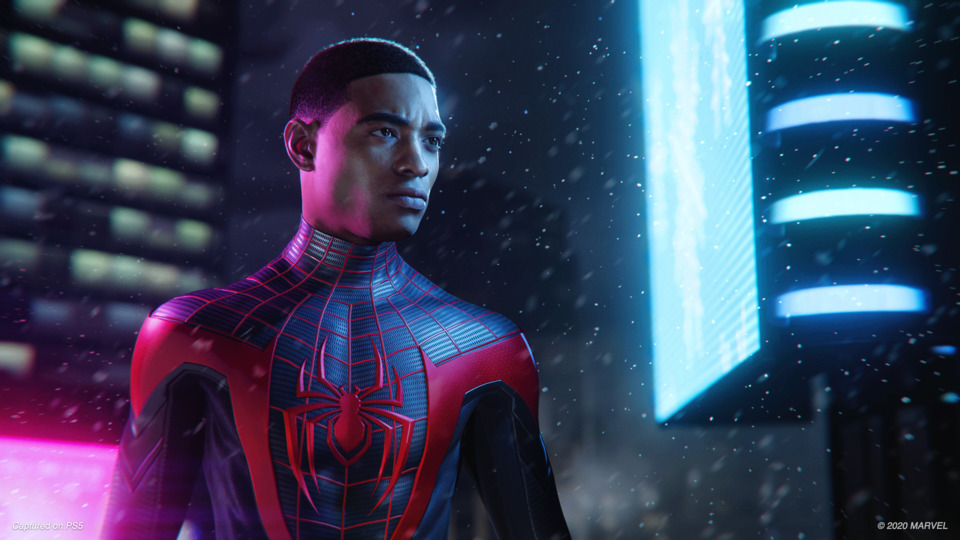
4. Yakuza: Like a Dragon
There's a world where this might have been in my first-place spot if I'd had a chance to finish it, but given it released in the middle of 18 other games alongside the console launches and is like 80 hours long, I'm still in chapter 5. But it's been a wild and hilarious time for the first 20 hours, and as soon as the GOTY workload is in the rearview mirror, I’m going straight back to it.
I've been quite Yakuza-curious ever since I sat in on the video for Zero a while back, and I'm tickled that they finally broke off and started a brand new story that let me get in on the ground floor without any baggage. Frankly with all the men in diapers and crawfish and so on, I'm not sure if I'm getting the pure Yakuza experience here or an absurdist distortion of it, but I don’t much care. The combination of gritty crime drama and sheer lunacy isn’t really like anything I’ve played before.
The wacky personality and lovable characters are the biggest draw for me so far, but I also have to credit this game’s shift to a JRPG (?!?) format for placing it so high on this list. The JRPG was my favorite genre once upon a time, but it’s been a very, very long time since I truly loved one, and the last one I even remember playing, Final Fantasy XIII, was (lord help me) over a decade ago. So it’s great to be engaging again with classic elements like party and job management, some surprisingly fun turn-based combat, random encounters in the “overworld” of the Yokohama streets and so forth. Something about mixing those elements with modern-day gangster melodrama--rather than world-saving crystals and wispy teenage girls with magical powers and amnesia--makes this game feel fresh as heck to me.
Also, for what it's worth, my girlfriend has declared this Backseat Game of the Year. Ichiban is extremely popular in our household.
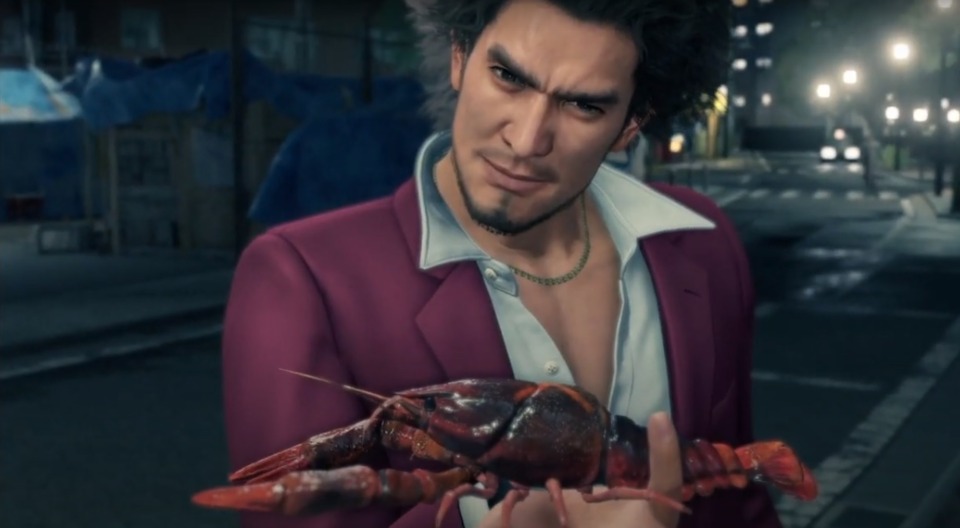
3. Ori and the Will of the Wisps
Will of the Wisps is such a vast improvement over Blind Forest in every way (except the orchestral score, which is unassailable in both games). The rendering of the visuals advanced so much in both technology and art design over Blind Forest's relatively humble 2D beginnings. The combat evolved not only into something I actually wanted to play, but into a really kinetic system that has you launching, slamming, and bouncing all over the place with every attack. All the new abilities and mobility tricks, and the expertly tuned controls, make it so damn satisfying to launch and dash and climb your way around. The addition of a multitude of NPCs and side quests to go with them helped imbue the world with more life and personality, and the little glade you get to build up and make into a new home for many of the ravaged land's displaced creatures (particularly the child-like Moki, who deliver just the most charming dialogue) was a lovely respite from the creeping decay overtaking the rest of the land.
I had sort of a strange relationship with this game: I played the first couple of hours at the last pre-lockdown press event I attended, back in mid-February, at a time when you were still shaking hands with out-of-town business contacts but also starting to make small talk about how "that coronavirus sounds like it's getting rough" or whatever. Then the game released the same day we made the decision to stop going into the office, and between the scramble to figure out how to do our jobs from home and some unfortunate bugs and launch issues with the game, I basically played that first two hours again and then put it down, intending to come back to it once its issues were ironed out and I had time to work it in.
All that said, even once I did come back to it a short couple of weeks before GOTY, I merely saw this game as an extremely well crafted Metroidvania that I figured would end up somewhere in the bottom half of my list, right up until the last two hours or so. The sheer pathos this game manages to wring from a menagerie of forest nymphs and weird bird creatures caught me completely off guard. The story touches on abandonment and rage and togetherness and sorrow and sacrifice and, ultimately, inevitability and the need for all life to pass on so that life can be born anew. It evokes the same themes that made Outer Wilds one of my favorite games of all time last year. To me that’s the most potent sort of story you can tell, and this game does it as well as any I’ve played, backed by one of the most haunting scores I’ve ever heard.
(Gareth Coker, if you’re reading this, I was too nervous to come up and say hello at that press event back in February for fear of embarrassing myself, but just gonna be sappy here and say your work to date has moved me tremendously over the years and I’ll be following all of your output from now on.)
2. Minecraft/RTX
2a. Astroneer
This spot on the list is doing a lot of work, but then, what better way to celebrate collaborative building than by bolting two separate games and an advanced graphics add-on into the same item?
How 2020 became the year I finally fell in love with Minecraft I'm still not entirely sure, but I knew before our first Friday stream was even over that those shows were instantly going to become my favorite part of the week. Everyone knows what Minecraft is and I don’t need to belabor it here, but I’m glad I got to take part in the full Minecraft arc at last, from starting a fresh world to taking down the Ender Dragon, and then finally destroying everything we’d built in the most irresponsible fashion. This was also a great excuse to indulge my fascination with Unix-y stuff by running the site’s server on the FreeBSD machine sitting under my desk, and occasionally running wild with the admin commands. As much as anything, though, this game is as high up on the list as it is because it acted as a framework for some much-needed socializing and group funning around on a steady basis.
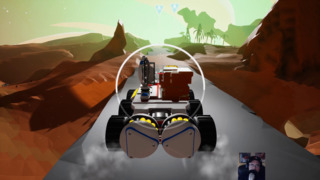
Coincidentally, this also happened to be the year that Minecraft got its official ray tracing add-on (and I finally got a graphics card capable of ray tracing). I’ve followed the evolution of real-time computer graphics obsessively ever since I got my hands on the Doom shareware, and ray tracing is up there with hardware-based transform and lighting and programmable pixel shaders as one of the most transformational shifts to date in the way 3D games are rendered. The raw horsepower isn’t quite there yet for ray tracing to fully come into its own, but it’s simply where games are going, and Minecraft (along with Quake II RTX) offers the most comprehensive, top-to-bottom implementation of the feature so far. With its rigidly angular world and freedom to deform terrain and place light sources and reflective surfaces all over the place, Minecraft is actually uniquely suited for showing off the effects and interactions you get with ray tracing, and I spent many relaxing hours building and tinkering around in my own little ray tracing lab, because of course I did.
Lastly, Astroneer is an adjunct inclusion on this list despite being an actual inclusion on my 2019 GOTY list, because I realized this year I hadn’t truly played Astroneer till I’d played it with Vinny every week for months on end during the summer. We didn’t just play Astroneer, we maximized it. Who knew graphene production could be so efficient! That time I logged back into the game after Vinny had spent an entire weekend organizing a smorgasbord of every element and compound in the game was one of my favorite moments of the year. All the digging and spelunking we did, marveling at the oddities of each planet’s core, the bizarre vehicular physics bugs, that lovely, lovely flat terrain...it was just the best time. Games like Minecraft and Astroneer and even Satisfactory were what I needed the most this year.
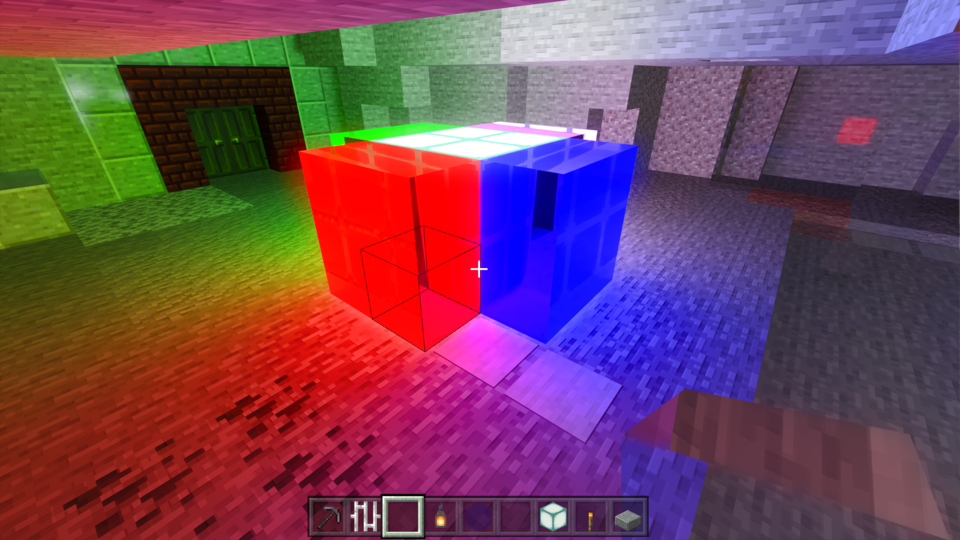
1. Astro’s Playroom
A funny thing happens as you age. You spend your 20s and early 30s assuring yourself, "I may get old, but I'll never be an old person. I know I'll always want to keep up with what’s going on now, always care about the latest trends and music and slang." Then little by little, you increasingly see movies coming out featuring stars you don’t know. That song everyone’s talking about, you’ve managed to never have heard it. Things are “fire” instead of “rad” now? Sign me up for the mailing list, I can’t keep up anymore.
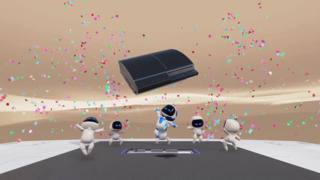
Suddenly you're around middle age, and you find that without even realizing it or meaning to, you've started looking backwards as much as forwards. Your friends move away and drift apart. Everything hurts a little. The older family members you grew up with are declining or have already passed on. You have to actively resist dwelling on times and places and people and feelings that aren’t around anymore. Sometimes you can’t help it.
Astro’s Playroom is a remarkable celebration of PlayStation’s history, which--as I accrued the many lovingly rendered controllers and cameras, handhelds and consoles scattered through the game--I realized is also my history. This game drove home for me just how acutely I can demarcate the phases of my life according to the ebb and flow of console generations. It turns out, a lot happens in a five-to-seven-ish-year window. Enough of those strung together, you’re looking back on your whole life.
In that sense, taking a tour through the hub where Astro’s Playroom stores your oversized DualShocks and three-story PlayStations felt like a very personal trip through time. That third-model PlayStation 3 with the sliding disc cover? I didn’t have that one, but I’m pretty sure Ryan did. I look at that giant launch-model PS3 and suddenly I’m back in Times Square, November 2006, covering the PS3 launch professionally, young and naive and feeling incredibly fortunate to be living my dream. Now it’s 2000, I’m a college student couch-surfing my way through a summer GameSpot internship in San Francisco, and being blown away by my roommate’s exotic import PS2. Now I’m 16 and my dad is yelling at me for hooking up my brand new PlayStation--the first console I saved up enough money to buy myself--to the family television, because I just have to see Toshinden on a screen bigger than 13 inches.
This is probably an overly saccharine view on what is largely a children’s toy, but I don’t care a whit. Cue the Don Draper speech about rocket ships and time machines, I guess.
Sure, there are plenty of great things you can say about Astro’s Playroom, the game. It’s the single best showcase for the new hardware gimmicks in the DualSense, which are among the most interesting additions to video game controls since analog sticks and triggers became standard. It’s also an uncommonly charming, inventive 3D platformer with a zeal few similar games can match. Even taken as just a game, it filled me with more pure joy than anything else I played this year.
All that together is the sum of what Astro's Playroom was for me. Not just a delightful little platformer or a tech demo but a historical document, firm evidence of just how much games can mean to all of us (or that I’m losing my marbles (or both)). If you need me, I’ll be in the PlayStation Labo, wallowing in nostalgia just a little bit longer. Here’s to a 2021 that’s good enough for everyone to get back out there and make some new memories, too.
